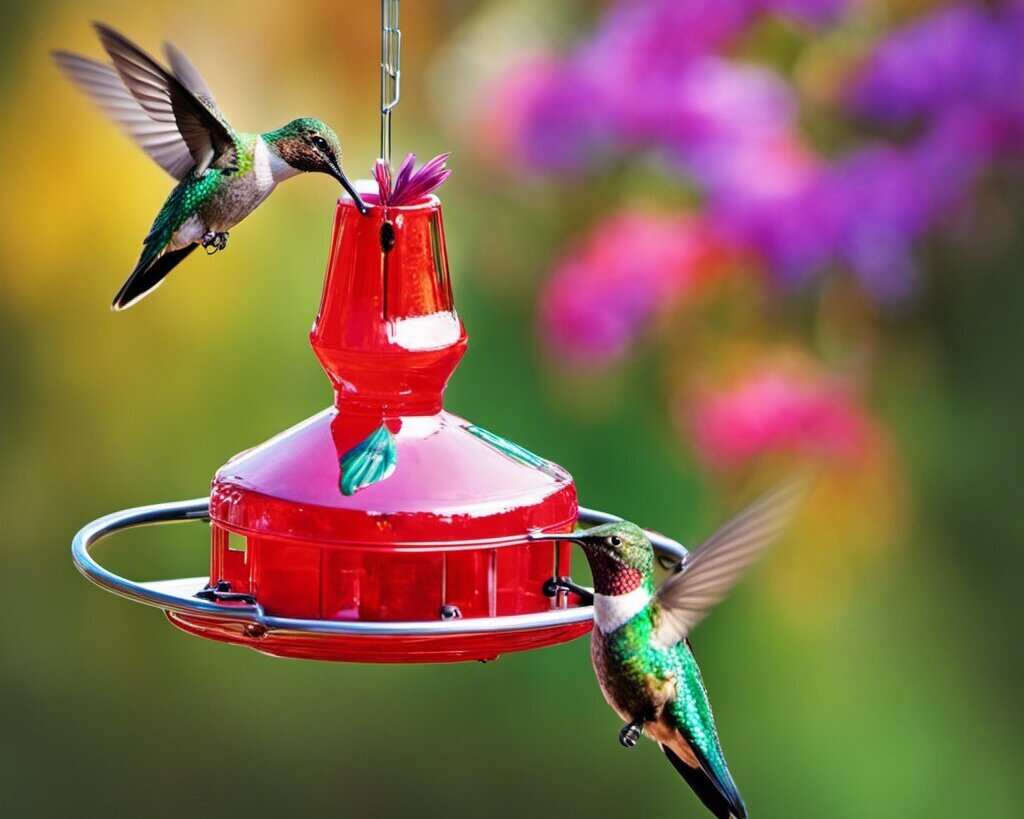If you’re a bird lover, you might be wondering when it’s appropriate to take down your hummingbird feeders. The timing of this decision is crucial, as it can impact the health and well-being of these small and delicate creatures. In this comprehensive guide, we’ll provide you with all the information you need to know about when to take down hummingbird feeders in the United States.
Table of Contents [show]
Key Takeaways
- The timing of taking down hummingbird feeders is essential to the health and well-being of the birds.
- Factors such as migration patterns, climate, and natural food sources should be taken into account when deciding when to remove feeders.
- Cleaning and storing your feeders should be done properly to ensure they are ready for the next feeding season.
- Attracting winter birds to your yard can be a great way to continue bird-watching throughout the colder months.
- Citizen science initiatives can play a crucial role in monitoring hummingbird behavior.
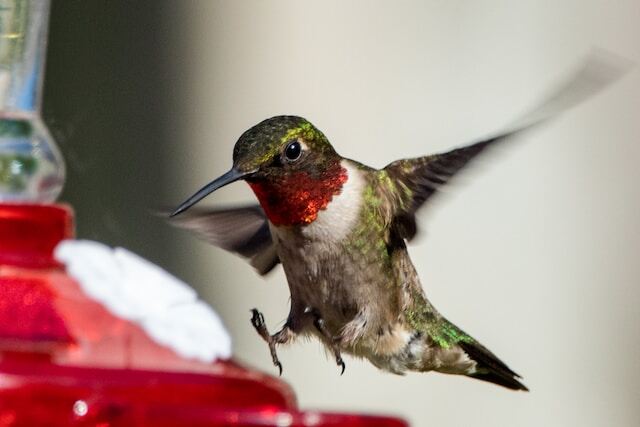
When Should You Take Down Hummingbird Feeders?
It is recommended to take down hummingbird feeders during the fall season when the birds start migrating to warmer regions. This is because leaving the feeders up during the winter season may attract hummingbirds to stay in an area that is not suitable for their survival.
Additionally, if the nectar in the feeder freezes, it can become a hazard for the hummingbirds. Therefore, it is best to take down the feeders in the fall and put them back up in the spring when the birds return.
Understanding the Hummingbird Feeding Season
Hummingbirds are fascinating creatures that bring joy and wonder to bird enthusiasts. However, their feeding season is brief, and it is crucial to understand its duration to determine when it is appropriate to take down hummingbird feeders.
The hummingbird feeding season is typically from late spring to early fall, spanning from April to September in most areas of the United States. However, it can vary depending on several factors such as climate, latitude, and elevation. In the southern regions of the country, it may start as early as March and stretch until October or November. Conversely, the northern regions may experience a shorter feeding season, starting in May and ending in August.
It is essential to note that hummingbirds rely on cues from nature to signal the beginning and end of the feeding season. As such, it is appropriate to take down hummingbird feeders once the season has officially ended. In most areas, this occurs towards the end of September, when the birds prepare for their migration south.
Factors such as climate change and erratic weather patterns may affect the hummingbird feeding season’s length and timing. Thus, it is vital to track the birds’ behavior, such as arrival and departure times, to determine the appropriate time for removing feeders in your area.
Understanding the hummingbird feeding season is the first step to successful and responsible feeding. Taking down hummingbird feeders at the appropriate time ensures that the birds follow their natural instincts and prevents them from becoming dependent on feeders for survival.
Factors to Consider for Hummingbird Feeder Removal Timing
When it comes to taking down hummingbird feeders, timing is crucial. Here are some essential factors to consider:
| Factors | Description |
|---|---|
| Migration patterns | Hummingbirds follow specific migration patterns during the fall as they travel to warmer climates. The timing of taking down the feeder should align with their journey to help them avoid any disruption in their travel. |
| Climate | The climate of your region can also significantly impact hummingbird feeding patterns. Temperature fluctuations can prompt hummingbirds to feed more or less frequently. As such, you should adjust the feeder as needed to ensure it aligns with the natural feeding habits of these birds. |
| Availability of natural food sources | As the migration season draws near, it is common for natural food sources to start diminishing. Keeping the hummingbird feeder around for an extended period may result in hummingbirds becoming too dependent on it and missing the opportunity to feed from natural sources. In contrast, removing the feeder too early can deny late-migrating birds the chance to replenish their energy. |
Based on these factors, the best time to remove hummingbird feeders will vary from region to region. As such, it’s essential to study the migration patterns of hummingbirds in your area and consistently monitor hummingbird activity to identify the optimal time to remove the feeder.
The Importance of Providing Natural Food Sources
Hummingbirds rely heavily on nectar as their primary food source, especially during migration periods. However, it’s important to understand that hummingbirds require a diverse diet to meet their nutritional needs. Offering natural food sources ensures they receive a balanced diet, contributing to their overall health and well-being.
When considering when to stop using hummingbird feeders, it’s essential to take into account the availability of natural food sources. In late summer and early fall, many plants, such as red cardinal flowers, bee balms, and salvias, bloom, providing a natural nectar source for hummingbirds. As the days get shorter and temperatures get colder, these sources begin to dwindle, and hummingbirds will rely on other natural food sources such as insects, spiders, and tree sap.
Providing natural food sources in your yard not only helps hummingbirds but also creates a habitat that supports other wildlife. By planting a diverse range of flowers and shrubs that bloom at different times of the year, you can ensure there are always natural food sources available for hummingbirds and other birds.
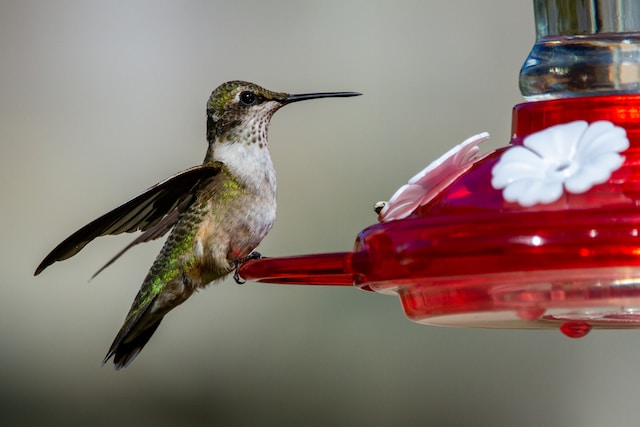
Signs That Hummingbirds Have Migrated
Knowing when hummingbirds have migrated is essential information for determining when to stop using hummingbird feeders. The exact dates that hummingbirds leave an area can vary depending on factors such as climate, but there are some signs to look out for that indicate they have started their journey south.
1. Absence of Hummingbirds: The most obvious sign that hummingbirds have migrated is the lack of their presence. If you have regular sightings of hummingbirds at your feeders, but suddenly they stop coming, it’s likely that they have left for the season.
2. Lower Feeder Activity: As the hummingbird feeding season comes to an end, you may notice a decrease in activity at your feeders. This is because the birds are starting to rely more on natural food sources rather than the feeders.
3. Changing Bird Populations: Another sign that hummingbirds have migrated is the appearance of new bird populations in your area. Winter birds such as juncos and finches may start to show up in your yard once the hummingbirds have left.
It’s essential to note that even if you still see hummingbirds at your feeders later in the season, it’s best to stop using them by mid-September at the latest. This is because late-migrating hummingbirds need to rely on natural food sources to build up their strength for the long journey ahead.
Maintaining a Healthy Feeding Environment
Hummingbirds are attracted to vibrant, healthy environments with plenty of natural food sources. As such, it is essential to maintain a clean and safe feeding environment for hummingbirds, ensuring their optimal health and well-being.
When taking down hummingbird feeders, it is important to clean them thoroughly to prevent the growth of harmful bacteria or mold. To do this, soak the feeder in a solution of one part white vinegar to four parts water for at least an hour. Rinse thoroughly with hot water and allow it to air dry completely before storing it away.
In addition, it is crucial to regularly clean the feeding area around the feeder, removing any spilled nectar or debris that might attract unwanted pests or insects. Keeping the feeding area clean helps prevent the spread of disease and ensures hummingbirds have access to a safe and clean food source.
When is it appropriate to take down hummingbird feeders? As a general rule, once hummingbirds have migrated from your area, it is safe to remove the feeders. However, if you notice any late-blooming hummingbirds in your area, it is best to keep the feeders up until they have migrated as well.
Cleaning and Storing Hummingbird Feeders
Once you have decided on the appropriate time for taking down hummingbird feeders, it is crucial to clean and store them correctly. This ensures that they are ready and safe for use during the next hummingbird feeding season.
Begin by removing any remaining nectar from the feeder and disassembling it. Wash all parts of the feeder thoroughly with warm water and a mild detergent, such as dish soap. Use a bottle brush or other specialized cleaning tool to remove any nectar residue or debris from the feeder’s small crevices. Be sure to clean not only the feeder’s reservoir but also its ports and perches.
Rinsing the feeder with a solution composed of one-part vinegar to four parts water can help remove any mold or fungal growth, which can be harmful to hummingbirds. Rinse the feeder thoroughly with clean water and allow it to air dry completely before storing.
Store hummingbird feeders in a dry, cool place, free from sunlight and insects. Avoid storing them in the garage or basement, where they may be exposed to extreme temperatures. Consider storing them in a sealed container or bag to protect them from dust and moisture during the offseason.
Following these steps will ensure that your hummingbird feeders remain in excellent condition and are ready for use when the hummingbirds return next year. Remember, regular cleaning and maintenance of hummingbird feeders not only ensures their longevity but also contributes to a healthy feeding environment for these exquisite birds.
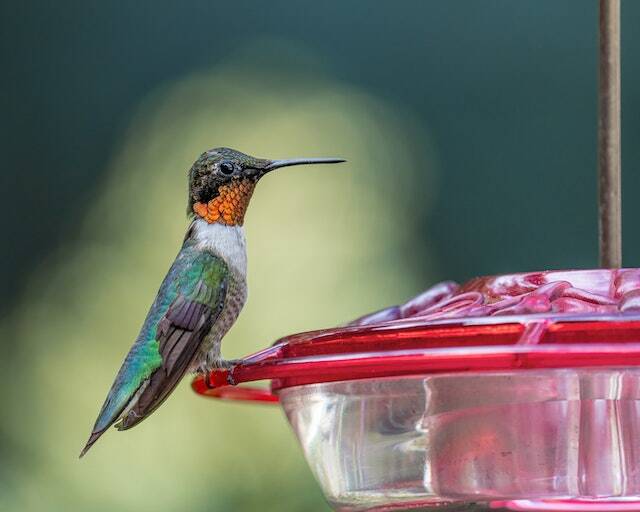
Late Bloomers: Hummingbirds and Migration Patterns
While the typical feeding season for hummingbirds in the United States usually ends in the fall, there are some late-blooming hummingbirds that may linger. These late-migrating birds can present a challenge in determining the appropriate time to take down hummingbird feeders.
The hummingbird behavior varies depending on their species, age, and gender. Some late-blooming males may stick around to feed before continuing their migration, while others may even overwinter if they find an area with adequate resources. The presence of late-migrating hummingbirds may be exciting for birdwatchers, but it’s important not to rely solely on hummingbird feeders to sustain these latecomers.
If you’re unsure whether you have late-blooming hummingbirds in your area, continue to monitor your feeder until you see no activity for several weeks. This typically occurs around the end of October or early November, but may vary depending on your geographic location and climate. Once you’re confident that your feeder is no longer being used, you can safely take it down and store it for the season.
Taking Down Hummingbird Feeders in Different US Regions
Hummingbird feeding seasons can vary significantly across different regions of the United States due to climate and migration patterns. As such, it’s essential to consider where you live when deciding when to take down hummingbird feeders.
In areas with mild winters such as parts of California, Texas, and Florida, hummingbirds may stay year-round. In these regions, it is recommended to keep hummingbird feeders up throughout the year and perform regular cleaning and refilling.
For areas with more defined seasons, such as the Midwest and Northeast, hummingbirds typically migrate south to Mexico and Central America by late fall. As a rule of thumb, it is best to take down hummingbird feeders 1-2 weeks after the last sighting of hummingbirds in the area. This ensures that any lingering birds have ample time to find natural food sources and prepare for migration.
| Region | Optimal Time to Take Down Hummingbird Feeders |
|---|---|
| West Coast (California) | Year-round feeding |
| South (Texas, Florida) | Year-round feeding |
| Desert Southwest (Arizona, New Mexico) | Late October to early November |
| Mountain West (Colorado, Utah) | Early to mid-October |
| Midwest (Illinois, Michigan) | Mid-September to early October |
| Northeast (New York, Massachusetts) | Mid-September to early October |
Remember, these are general guidelines, and you should always keep an eye out for hummingbirds in your region. Late-migrating hummingbirds may also pass through certain regions, so even if it’s past the recommended date for taking down hummingbird feeders, keep an eye out for any birds that may still need feeding.
Attracting Winter Birds to Your Yard
Once you have decided to stop using hummingbird feeders for the season, you can still attract a variety of winter birds to your yard. Providing natural food sources and creating a hospitable environment are key factors in attracting birds during the colder months.
Offering Natural Food Sources
During the winter, birds rely heavily on natural food sources such as berries, seeds, and fruit. By planting a variety of these in your backyard, you can provide an abundant food supply that will attract a range of bird species. Some great options include:
| Plant Type | Examples |
|---|---|
| Berries | Winterberry, holly, hawthorn |
| Fruit | Crabapples, grapes, oranges |
| Seeds | Sunflower, millet, thistle |
Additionally, providing a birdseed feeder can be a great way to attract birds to your yard during the winter. Options such as black oil sunflower seeds, nyjer seeds, and suet are all popular among winter birds.
Creating a Hospitable Environment
In addition to offering natural food sources, creating a comfortable environment for birds is essential in attracting them to your yard. Providing a source of water, such as a bird bath or fountain, can be a great way to entice birds during the winter months.
Finally, be sure to create a safe environment by keeping cats indoors and minimizing the use of pesticides and other chemicals in your yard. This will not only attract more winter birds, but also help ensure their safety and well-being.
In conclusion, even after taking down your hummingbird feeders for the season, you can still enjoy a vibrant bird-watching experience in your yard throughout the winter months by providing natural food sources and creating a hospitable environment for a variety of bird species.
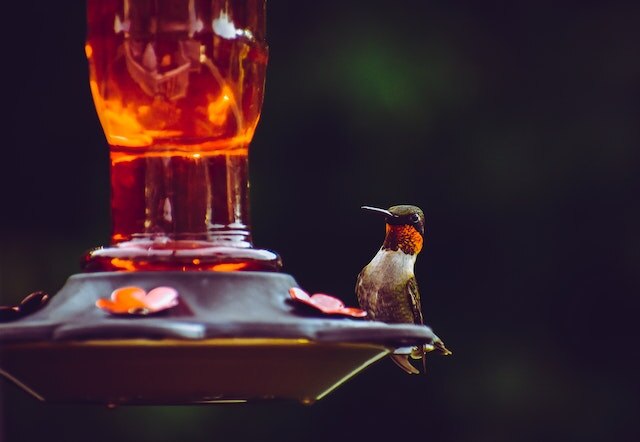
The Role of Citizen Science in Monitoring Hummingbird Behavior
Citizen science refers to the involvement of everyday people in scientific research projects, providing valuable data to researchers and increasing public engagement with science. One area where citizen science has played a significant role is in monitoring hummingbird behavior, particularly their migration patterns and feeding habits.
By participating in citizen science initiatives such as Project FeederWatch, eBird, and the Hummingbird Monitoring Network, individuals can collect data on hummingbird sightings and behavior in their own backyards. This information is then shared with scientists to better understand hummingbird populations and inform conservation efforts.
Furthermore, citizen science has helped to uncover fascinating insights into hummingbird behavior, such as the discovery of a hybrid species between the Rufous and Allen’s hummingbirds. This discovery would not have been possible without the detailed observations of citizen scientists across the hummingbird’s range.
When it comes to deciding when to take down hummingbird feeders, citizen science data can provide crucial guidance. By tracking hummingbird sightings and migration patterns through these initiatives, individuals can determine the best time to remove their feeders while still ensuring that the birds have access to adequate food sources during their journey.
By participating in citizen science initiatives, individuals can not only contribute to important scientific research but also gain a greater appreciation for the natural world and the beauty of hummingbird behavior.
Conclusion
In conclusion, taking down hummingbird feeders at the appropriate time is crucial to the well-being of these wonderful creatures. The optimal timing of removing hummingbird feeders varies depending on many factors, including migration patterns, climate, and the availability of natural food sources.
It is essential to understand the hummingbird feeding season and the signs that indicate when they have migrated. Providing natural food sources is also critical to their survival, and taking down the feeders at the right time contributes to their well-being.
When removing hummingbird feeders, it is important to maintain a healthy feeding environment and clean and store the feeders properly. Late-migrating hummingbirds may also impact the decision of when to take down the feeders.
Regionally, hummingbird feeding and migration patterns vary, so specific guidelines should be followed for each area. Once the feeders are removed, it is possible to attract winter birds to your yard and create a vibrant bird-watching experience throughout the colder months.
Lastly, citizen science initiatives play a crucial role in monitoring hummingbird behavior and can help us better understand these amazing creatures. We hope you found this guide helpful and will take the necessary steps to ensure the well-being of hummingbirds in your area.
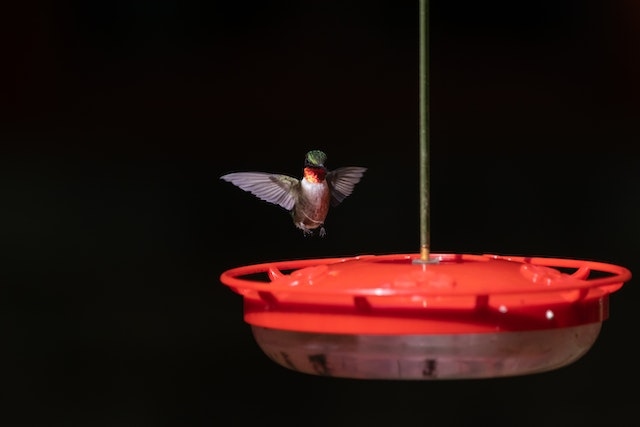
FAQs: When Should You Take Down Hummingbird Feeders?
What is the hummingbird feeding season end date?
The exact end date of the hummingbird feeding season can vary depending on factors such as geographic location and climate. In general, it is recommended to continue providing food for hummingbirds until you have observed no activity at your feeders for several weeks.
When is it appropriate to take down hummingbird feeders?
It is appropriate to take down hummingbird feeders when you are confident that all hummingbirds have migrated. This ensures that the remaining birds can find natural food sources and encourages their natural migration instincts.
What are the factors to consider for hummingbird feeder removal timing?
Several factors influence the timing of removing hummingbird feeders. These include migration patterns, climate, and the availability of natural food sources. It is essential to consider these factors to ensure the well-being of hummingbirds.
When should you stop using hummingbird feeders?
It is recommended to stop using hummingbird feeders when you have observed no activity for several weeks or when you are confident that all hummingbirds have migrated. This encourages them to rely on natural food sources.
What are the signs that hummingbirds have migrated?
Signs that indicate hummingbirds have migrated include the absence of hummingbird activity, the disappearance of territorial behavior, and a decrease in feeder consumption. These signs can help you determine when to stop using hummingbird feeders.
Why is maintaining a healthy feeding environment important?
Maintaining a healthy feeding environment is crucial for the well-being of hummingbirds. It helps prevent the spread of diseases, ensures the availability of clean food, and encourages the birds’ natural migration instincts.
How should I clean and store hummingbird feeders?
To clean hummingbird feeders, disassemble them and wash all parts with warm, soapy water. Rinse thoroughly, making sure no soap residue remains. Store clean and dry feeders in a cool, dark place to prevent mold growth or damage.
How do late-migrating hummingbirds affect feeder removal timing?
Late-migrating hummingbirds can complicate the decision of when to take down hummingbird feeders. If you notice the presence of late bloomers, continue providing food until they have migrated, ensuring they have enough nourishment for their journey.
When should you take down hummingbird feeders in different US regions?
Hummingbird migration and feeding patterns can vary across different regions of the United States. It is best to consult regional birding resources or local experts to determine the optimal timing for taking down hummingbird feeders in your specific area.
How can I attract winter birds to my yard after stopping the use of hummingbird feeders?
To attract winter birds, provide alternative food sources such as suet, seeds, and fruits. Ensure there is access to water and create a welcoming habitat with shelter and natural vegetation. These efforts will help attract a variety of birds during the colder months.
What is the role of citizen science in monitoring hummingbird behavior?
Citizen science initiatives play a vital role in monitoring hummingbird behavior, including tracking migration patterns and feeding habits. By contributing observations to scientific databases, individuals can help researchers better understand and conserve these fascinating birds.

